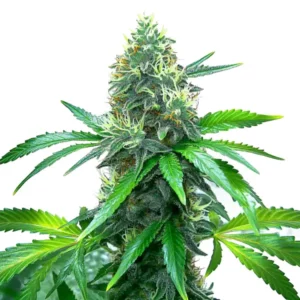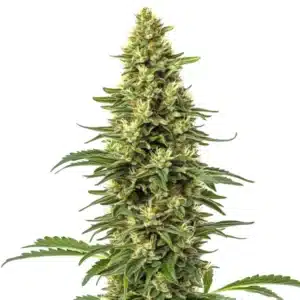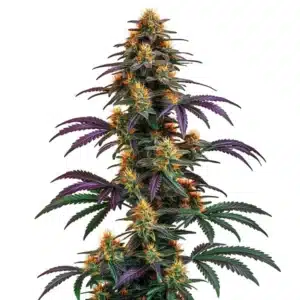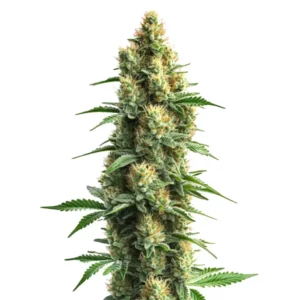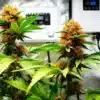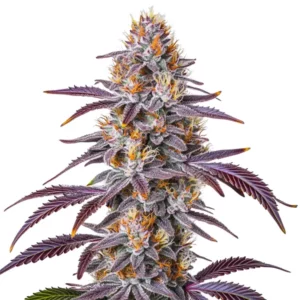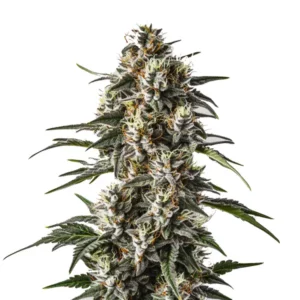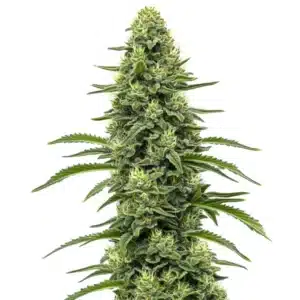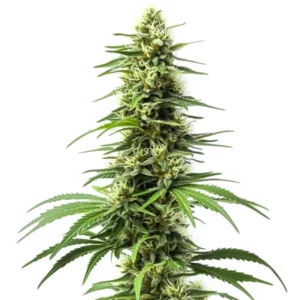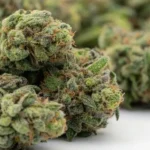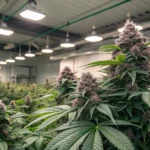
Apical Dominance vs Light Dominance in Cannabis Cultivation
When growing cannabis, knowing how plants respond to their environment can make a significant difference in yield and quality. Two key concepts in plant growth are often compared: apical dominance vs light dominance. While they might sound complex, they have straightforward effects on your cannabis plants.
Apical dominance is the plant’s natural tendency to grow upwards. This happens because of the apical bud, which releases hormones that suppress the growth of side branches. In contrast, light dominance involves how a plant reacts to light exposure, influencing its growth direction based on light availability.
Recommended Strains
Blue Dream
|
|
THC | 17% - 24% (Medium) |
|
|
Type | Feminized |
|
|
Yield | High |
|
|
Phenotype | 50% Indica / 50% Sativa |
OG Kush
|
|
THC | 20% - 24% (Medium) |
|
|
Type | Feminized |
|
|
Yield | Medium |
|
|
Phenotype | 55% Indica / 45% Sativa |
The differences between apical and light dominance are crucial for growers. Apical dominance focuses on the upward growth, while light dominance helps plants optimize their growth toward light sources. Both have unique impacts on plant health and yield, and knowing how to balance these can elevate your cultivation game.
Apical Dominance in Plant Growth
Apical dominance is a natural process where the main central stem of the plant grows more vigorously than the side branches. This occurs due to the apex or the topmost part of the plant, which produces hormones like auxins. Auxins suppress the growth of lateral buds, ensuring that the plant grows tall and straight.
In cannabis, apical dominance can lead to a single, tall cola, which is the main flowering part. For growers, managing apical dominance is essential for optimizing light exposure and ensuring even growth. Techniques like topping and pruning can help control this dominance, encouraging the plant to develop multiple colas.
Knowing apical dominance in plant growth helps growers create strategies that align with their yield goals. By recognizing how the plant prioritizes upward growth through hormone production, cultivators can intervene with techniques like topping to redistribute growth energy. This not only increases yield but also allows for more efficient use of grow space.
Moreover, harnessing apical dominance in plant growth involves careful timing. Early intervention during a plant’s vegetative stage can set the stage for a robust flowering phase. By strategically cutting the main stem, growers can promote a bushier profile, maximizing light capture and nutrient absorption, ultimately supporting healthier development.
Impact of Apical Dominance on Cannabis Strains
Different cannabis strains exhibit varying levels of apical dominance. For instance, the Gelato strain from Blimburn Seeds tends to have strong apical dominance, making it ideal for growers who want tall plants with substantial central colas.
On the other hand, strains like the Blue Dream may present a more balanced growth pattern, offering growers flexibility in managing plant height and bushiness. Knowing your chosen strain’s growth tendencies can help you better implement growth techniques.
Apical dominance versus phototropic response is evident across different strains, affecting how a grower might approach cultivation. For strains with pronounced apical dominance, training techniques must be adjusted to prevent excessive vertical growth that might overshadow side branches. This tailored approach ensures each plant develops optimally according to its genetic predisposition.
When considering the impact of apical dominance on cannabis strains, it’s vital to recognize the diversity in growth patterns. Some strains might naturally resist apical control, necessitating more aggressive interventions. By understanding these traits, cultivators can plan their strategies accordingly, ensuring each plant’s growth is managed effectively for maximum yield and quality.
Promos & Deals
Light Dominance Effect on Apical Dominance
Light dominance refers to a plant’s growth response to light, known as the phototropic response. Plants naturally grow towards light sources, which can sometimes compete with apical dominance. This interaction is often described as apical dominance vs light dominance, where the plant must balance hormonal signals with external light conditions. When light is unevenly distributed, the plant may bend or stretch toward the source, altering its natural growth pattern.
Balancing light exposure is crucial in cannabis cultivation. Even light distribution can help maintain apical dominance, allowing for healthier growth. Growers often use techniques like adjusting light heights and angles to ensure even light coverage across the plant canopy.
The light dominance effect on apical dominance becomes apparent when plants start to lean towards a light source. This competition between two growth factors requires careful management to prevent any adverse effects on plant structure. By ensuring even light coverage, growers can mitigate the influence of light dominance, promoting balanced growth.
In cannabis cultivation, addressing the light dominance effect on apical dominance involves more than just adjusting lights. It demands an knowing of how plants perceive and react to light. Creating an environment where light is evenly distributed ensures that both apical and side growth are harmonized, leading to healthier plants and improved yields.
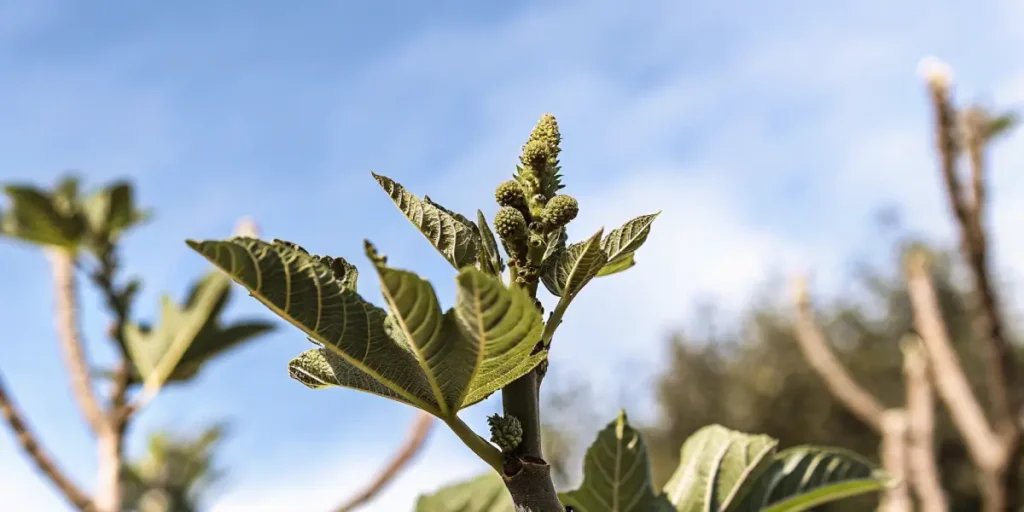
Techniques to Manage Light and Apical Dominance
Training techniques, such as low-stress training (LST), can help manage both apical and light dominance. LST involves gently bending and tying down branches to create an even canopy. This allows for better light penetration and encourages the growth of side branches.
Another effective method is the use of reflective materials. By strategically placing reflective surfaces around the grow space, you can enhance light distribution. This helps in reducing the strong influence of light dominance over apical dominance, promoting more uniform growth.
Many growers find that combining techniques like LST and reflective materials is the most effective approach. By using these methods in tandem, the effects of apical dominance vs light dominance can be balanced, allowing for a more controlled growth environment. This integrated strategy enhances both light distribution and structural integrity of the plants.
Implementing these techniques requires a keen eye for detail and a willingness to adjust as plants develop. Regular assessment of plant structure and light distribution helps in fine-tuning these methods. This proactive management not only maintains a healthy growth environment but also optimizes the role of hormones in apical dominance and light influence, ensuring a bountiful harvest.
Practical Applications in Cannabis Cultivation
For first-time growers, managing apical dominance vs light dominance can be daunting. However, with practical strategies, it’s possible to enhance plant health and yield. Start by selecting strains that align with your grow setup and goals.
Regularly monitor your plants’ growth patterns. Adjust lighting setups as needed, and employ training techniques to maintain an even canopy. This not only improves light penetration but also supports more balanced nutrient distribution.
Knowing the practical application of managing apical dominance vs light dominance involves more than just theoretical knowledge. Hands-on experience is key. By experimenting with different strains and setups, growers can gain insights into the nuances of plant behavior, allowing for more informed decision-making.
Incorporating technology, such as automated light systems and sensors, can further enhance the management of these growth factors. These tools provide real-time data on plant conditions, enabling growers to make precise adjustments to lighting and training techniques, thereby optimizing the cultivation process.
Real-Life Examples of Successful Cultivation
Consider a grower using the Gelato strain. By topping the plant early in its vegetative stage and employing LST, they can achieve multiple colas and an even canopy. This approach maximizes light exposure and boosts yield.
Another grower might choose the Blue Dream for its balanced growth. By using reflective materials and carefully positioning lights, they can enhance light dominance while maintaining apical control, leading to a healthy harvest.
Real-life examples of successful cultivation highlight the importance of adaptability. A grower working with the OG Kush strain might focus on enhancing side growth to counteract light dominance effect on apical dominance, using side lighting and reflective techniques to create a more uniform growth pattern.
These case studies demonstrate that understanding the differences between apical and light dominance empowers growers to tailor their approaches. By learning from others’ experiences and adjusting to specific plant responses, cultivators can achieve consistent success, regardless of the strains or environmental challenges they face.
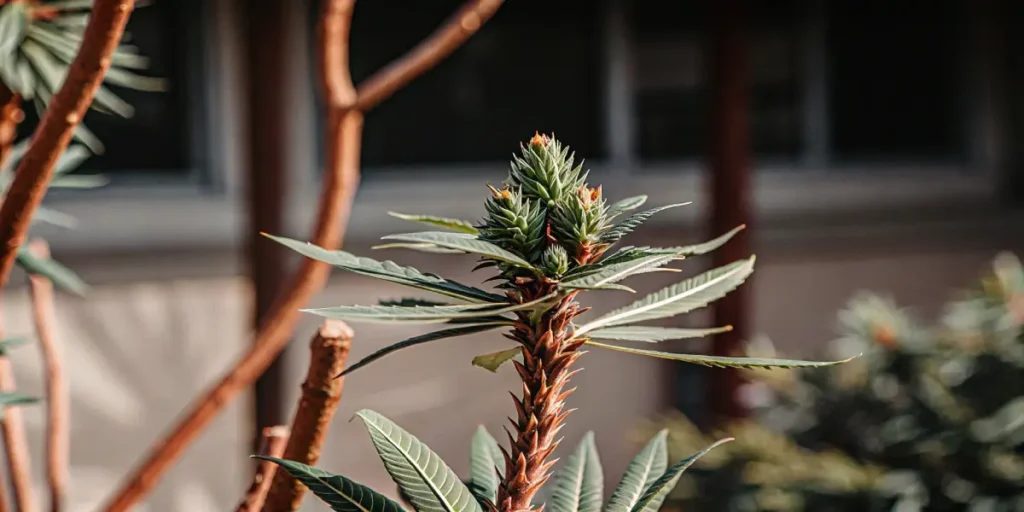
FAQs
What is the difference between apical dominance and light dominance?
Apical dominance focuses on the upward growth driven by the apical bud, while light dominance involves the plant’s growth response to light sources. Apical dominance leads to taller plants with central colas, while light dominance can cause plants to bend or stretch towards light.
In practice, both govern how a plant grows and responds to its environment. Managing them effectively involves understanding how they interact, influencing plant structure and yield. Techniques like topping and strategic lighting can help balance these growth factors.
The differences between apical and light dominance are not just theoretical; they manifest in how plants allocate resources. Apical dominance tends to concentrate growth energy vertically, while light dominance can redirect this energy towards areas with better light access, affecting overall plant architecture.
By knowing the differences between apical and light dominance, growers can anticipate potential challenges in cultivation. For instance, a strong apical dominance might require more frequent topping, whereas pronounced light dominance might need adjustments in light positioning to ensure even growth.
How do hormones affect apical dominance and light influence?
Hormones play a critical role in plant growth. Auxins, produced by the apical bud, suppress side branch growth, reinforcing apical dominance. Cytokinins, on the other hand, promote lateral growth, countering apical dominance and enhancing bushiness.
Light influence and hormones interact closely. A plant’s phototropic response, driven by light exposure, can modify hormone distribution. This interplay determines how a cannabis plant grows, which is why understanding and manipulating hormonal effects can optimize plant health.
The role of hormones in apical dominance and light influence is a dynamic interplay that can significantly impact plant development. By modifying hormone levels through pruning and environmental adjustments, growers can steer plant growth towards desired outcomes, balancing height and bushiness.
It’s essential for cultivators to recognize how environmental factors like light can alter hormone activity. By creating optimal conditions, growers can enhance the natural hormone-driven processes, ensuring that plants develop in a way that maximizes both health and yield, taking full advantage of both apical and light dominance.
Can light dominance affect apical dominance in cannabis plants?
Yes, light dominance can influence apical dominance significantly. When light is unevenly distributed, plants may stretch towards it, altering the effects of apical dominance. This can lead to uneven growth and reduced yield if not managed properly.
Growers can mitigate this by ensuring even light distribution and employing training techniques like LST. These methods help maintain a balance between apical and light dominance, promoting healthier, more productive plants.
In environments where light dominance affects apical dominance, strategic interventions become necessary. Techniques such as adjusting light intensity and employing diffusers can ensure that light is spread evenly, preventing any single growth factor from becoming overly dominant.
Ultimately, light dominance effect on apical dominance can be harnessed rather than hindered. By understanding how these forces interact, growers can create a harmonious balance that supports robust plant architecture and maximizes yield potential, taking full advantage of both natural tendencies.
What are some practical techniques to manage both apical and light dominance?
Several techniques can help manage apical and light dominance. Topping is a common method to control apical dominance, encouraging the growth of multiple colas. Low-stress training (LST) can also be effective, creating an even canopy for better light exposure.
Additionally, using reflective surfaces can enhance light distribution, countering light dominance. Adjusting light angles and heights ensures even coverage, supporting balanced growth. These strategies, when combined, can optimize cannabis cultivation.
To effectively manage both apical and light dominance, growers should consider the timing of interventions. Early action in the plant’s life cycle can prevent dominance from becoming an issue later on. Planning and execution of training techniques are essential for long-term success.
Another practical technique is to regularly monitor and adjust environmental conditions. By keeping a close watch on temperature, humidity, and light levels, growers can ensure that their plants are in the best possible position to thrive, leveraging the natural tendencies of apical and light dominance to their advantage.
Why is it important to balance apical and light dominance in cannabis growing?
Balancing apical and light dominance is crucial for maximizing yield and ensuring healthy plant growth. An imbalance can lead to uneven growth, reduced light penetration, and suboptimal bud development. Proper management ensures your plants receive light evenly and grow robustly.
For both novice and experienced growers, understanding these concepts can make a significant difference. Through careful planning and application of techniques, you can achieve a successful and bountiful cannabis harvest.
The importance of balancing apical and light dominance cannot be overstated, as it directly affects the efficiency of resource use. Proper balance ensures that nutrients and light are distributed evenly throughout the plant, leading to increased vigor and productivity.
Achieving this balance requires a holistic approach, considering all aspects of plant care. By integrating knowledge of apical dominance vs light dominance into daily cultivation practices, growers can create an environment that supports healthy growth patterns, ultimately leading to higher quality and quantity yields.



